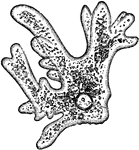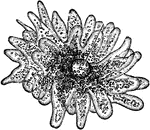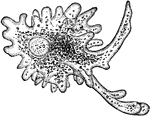Clipart tagged: ‘amoeba’
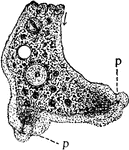
Amoeba
The streaming of Protoplasm in the Amoeba. The forward motion of the granules takes place more rapidly…
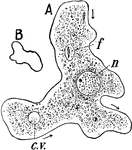
Amoeba
Amoung the simplest one-celled animals living in the ooze at the bottom of nearly every freshwater stream…

Amoeba
Difflugia one of several genera of amoebozoa that produce shells or tests from granules of sand. These…

Amoeba
Gromia is a widespread genus of marine and freshwater amoeboids, closely resembling some foraminiferans.

Diagrams of Foraminifera
"Diagrams of Foraminifera. A, monothalamian; B, C, polythalamian; D, horizontal, and E, F, vertical…

Amoebiform Gregarina
"Gregarina, their free amoebiform contents. GREGARINIDAE. A family or other major group of endoplastic…

Lymphosporidium
An illustration of the adult amoeboid Lymphosporidium truttae, which was the cause of the brook-trout…

Lymphosporidium in Blood Cell
An illustration of Lymphosporidium truttae in the blood cell of a brook trout, which was the cause of…

Lymphosporidium in Blood Cell
An illustration of Lymphosporidium truttae in the blood cell of a brook trout with numerous sporoblasts,…
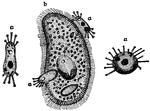
Paramecium Aurelia and its Parasites
In this image, (a) represents the parasites in the various stages of development, and (b), the larger…
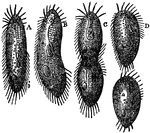
Propagation of an Infusorian by Spontaneous Division
"The singular phenomenon of spontaneous division may be witnessed by any one having patience to examine…
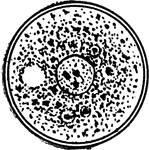
Spherical Cell
"Spherical cell (resting stage of Amoeba) illustrating general or universal symmetry. Any plane passing…

Volvox Globular
"The common Volvox is found in great abundance during the summer, and even in the depth of winter in…

Volvox Globular
"The common Volvox is found in great abundance during the summer, and even in the depth of winter in…
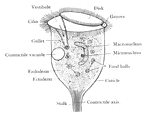
Vorticella
The vorticella is an interesting protozoan. It is found on submerged stems and leaves in stagnant water,…


